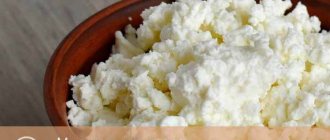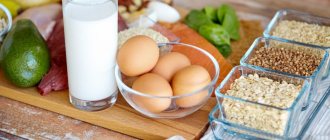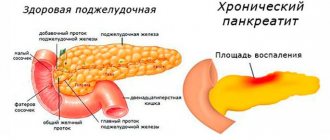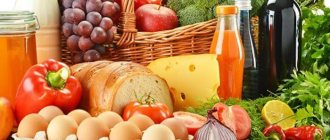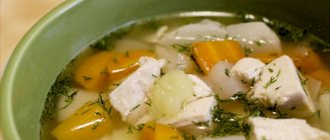Constipation or coprostasis is a delay in bowel movement for more than two days. In another interpretation, it includes the daily excretion of feces, but in a very small volume (less than 100 g).
It is rare for an adult to experience such a frequency of stool without unpleasant or painful sensations or a general disturbance of well-being. The problem arises of how to eat with constipation if the intestines are clogged. Questions about proper nutrition are increasingly of interest to residents of developed countries, wealthy people who have the opportunity to choose products.
According to statistics, they prefer fatty foods, sweet drinks, a lot of coffee, do not pay attention to the presence of fiber in vegetables and fruits in their diet, are addicted to fashionable diets, and do not exercise much. A diet for constipation is formed after identifying the causes and excluding the influence of diseases with pathology of the digestive organs.
The importance of a balanced diet
A balanced diet allows you to normalize the functioning of the gastrointestinal tract and control weight. Many experts recommend diet No. 3 for constipation. It is aimed at normalizing intestinal functions and metabolic processes in the body. A diet for constipation and bloating involves eating food at least 4 times a day. In this case, the daily amount of food should not exceed three kilograms. You need to drink at least 1.5 liters of fluid per day. Breakfast, lunch, afternoon snack and dinner should include healthy foods that contain proportional amounts of fats, proteins and carbohydrates. It is advisable to minimize the consumption of sugar and salt.
Up to contents
Kiwi
The weight of an average-sized kiwi is 75 g. This amount of pulp contains about 2.3 g of fiber, which allows you to cover about 9% of the body’s daily needs.
Scientists conducted an experiment. Its participants consumed a kiwi-based supplement for 4 weeks. It was possible to establish that their acts of defecation became more frequent in comparison with the control group [7].
Another study involving 11 subjects also examined the effects of kiwi on the gastrointestinal tract. They ate this fruit daily for 14 days. As a result, their stool became less hard and passed much more easily. [8]
The third experiment was carried out in 2010. It involved 54 people suffering from IBS. Their daily diet included kiwi, which they received for 28 days. All participants, without exception, noted an increase in stool frequency and its painless and easy passage through the intestines [9].
Scientists are of the opinion that kiwi helps relieve constipation thanks to actinidin. It is this enzyme that allows the product to activate intestinal motility and normalize stool [10], [11], [12].
To get the maximum benefit from kiwi, it must be eaten fresh, peeled. The pulp of the fruit is an excellent addition to any salad; you can make smoothies from it, which allows you to diversify your diet.
What can you eat and what can you not eat if you have constipation?
An approximate diet is prepared by a specialist and may include the following list of permitted foods:
| bread made from wholemeal wheat or rye flour | lean meat and fish, seafood (boiled or baked) | vegetables (beets, cabbage, carrots, tomatoes, sauerkraut, pumpkin, etc.) | berries (red rowan, lingonberry, gooseberry, blueberry, etc.) | honey and jam |
| vegetable non-rich soups | porridge with water (wheat, buckwheat, oatmeal) | low-fat dairy and fermented milk products (cottage cheese, milk, sour cream, fermented baked milk, etc.) | eggs (soft-boiled, in the form of an omelet) | vinaigrettes with vegetable oil |
| fruit compotes and decoctions of dried fruits, rose hips, wheat bran | herbs (celery, parsley, dill) | fruits (plum, apricot, melon, fig, etc.), both fresh and dried (prunes, dried apricots, etc.) | vegetable oils |
Prohibited products include:
| fresh white bread, bakery products from butter and puff pastry | “astringent” fruits (quince, pears, blueberries, pomegranate, lingonberries, dogwood) | soups made from rich and fatty broths | fatty dairy and fermented milk products | savory snacks |
| high fat dairy products | legumes | some drinks (coffee, cocoa, alcohol, strong tea, jelly) | hot seasonings (horseradish, pepper, mustard) | mushrooms |
| flour dishes (dumplings, dumplings, pies) | fatty meats and fish | vegetables that cause fermentation in the intestines (onions, radishes, turnips, garlic) | canned food | fried eggs |
| confectionery with rich cream | slimy porridges (rice, semolina) | some sweets (cakes, jellies, pastries, marmalade, chocolate, marshmallows) | smoked meats | mayonnaise, sauces |
Up to contents
Laxative salads: recipes
The most effective salads:
- Beetroot. The most important component in the salad is beets, which have the most laxative properties. It should be grated using a coarse grater or a Korean carrot grater. The salad is flavored with a few tablespoons. any vegetable oil, a couple of cloves of squeezed garlic and herbs.
- Cabbage. To prepare, you should chop several types of cabbage, such as white, blue and Chinese cabbage. The taste of the salad can be improved with chopped herbs, vegetable oil and finely chopped onions.
- Carrot-apple. Very simple, tasty and “dessert” salad. It's easy to prepare - grate the carrots and apple on a coarse grater, season with 1-2 tsp. linseed oil. If desired, you can sweeten it a little.
- Fruit. To do this, you need to mix chopped apple, pear, kiwi and other fruits (all have a weak or strong laxative effect) and season with a few tablespoons. yogurt, sprinkle with raisins or prunes.
- With celery. Celery, apple and carrot are grated in equal proportions. You can add white cabbage and the green part of celery, season with oil.
- Brush salad. The classic salad consists of cabbage (white), carrots and beets. They are rubbed in equal quantities and mixed with oil.
"Laxative" salad
Cooking methods and temperature conditions
As part of the diet for constipation, boiled and steamed foods are prescribed. You can also eat dishes baked in foil (without crust). For atonic constipation, food should be prepared in portions and not crushed. This helps enhance intestinal motility. It is recommended to exclude purees and minced meat dishes. This is due to the fact that these products do not stimulate intestinal motility. With spastic constipation in the elderly, on the contrary, food should be very soft so as not to provoke abdominal pain. The diet requires compliance with the temperature regime: you should eat food heated to 15–60 °C. Too hot or cold foods can irritate the stomach, and this, in turn, will negatively affect intestinal function.
Up to contents
Prunes
Prunes (dried plum fruits) are one of the most popular remedies for constipation. Everyone has known about its laxative properties since childhood. It is a source of fiber, with about 3 g per 40 g serving. According to the American Heart Association, this amount is enough to satisfy 12% of a person's daily need for insoluble dietary fiber.
Fiber (cellulose) promotes the accumulation of water in stool, thereby increasing its volume and normalizing stool. In turn, insoluble dietary fiber is fermented in the large intestine and converted into short-chain fatty acids. This process also increases the overall weight of stool and makes it easier to pass.
Prunes are rich in sorbitol, a sugar alcohol that is difficult for the body to absorb. Therefore, once in the intestines, it attracts water to itself, causing a laxative effect. This has been proven in a number of scientific studies [1], [2]
Prunes are beneficial for constipation due to their phenolic compounds. By stimulating the activity of intestinal bacteria, digestive processes are normalized and stool becomes stable [3].
Scientists conducted a study involving 40 people who suffered from chronic constipation. It showed that the daily inclusion of 100 g of prunes in the diet can improve stool consistency and normalize its frequency. Moreover, prunes turned out to be more effective than psyllium (dietary fiber for the treatment of constipation) [4].
To stabilize stool, prunes can be eaten as an independent product. It is no less useful in salads, baked goods, oatmeal, and stewed vegetables.
Diet for adults with spastic constipation
Spastic constipation occurs due to spasms in the intestines that prevent the excretion of feces. To eliminate this condition, it is recommended to eat minced meat, boiled fish, low-fat cheese, honey, olive oil, pasta, jam, vegetable puree, strawberries, grapes, figs, plums, melons, pears, oranges, tangerines. Lamb and beef, mayonnaise, smoked cheese, pastries, chocolate, sauces, cakes, salami and white bread should be excluded from the diet.
Sample menu for day No. 1
| Breakfast | a glass of low-fat milk, rye toast with honey and butter. |
| Lunch | a glass of apricot nectar and 2-3 cookies. |
| Dinner | creamy zucchini soup, chicken with spinach, brown bread, some fresh fruit. |
| Afternoon snack | 300 g prunes. |
| Dinner | a portion of carrot puree and 2 cutlets. |
Sample menu for day No. 2
| Breakfast | 1 bunch of grapes, St. John's wort decoction with honey. |
| Dinner | stewed eggplants with tomatoes, boiled fish, rye toast, some strawberries. |
| Afternoon snack | 2 cookies and a couple of spoons of jam |
| Dinner | pumpkin puree and rosehip infusion. |
Sample menu for day No. 3
| Breakfast | grape juice with wholemeal toast, butter and jam. |
| Dinner | chicken soup, pumpkin or mashed potatoes with chicken. |
| Afternoon snack | 300 g prunes. |
| Dinner | a glass of apricot nectar and an omelette with vegetables. |
Up to contents
Citrus
For constipation, it is useful to eat oranges, tangerines and grapefruits. The advantage of citrus fruits is that they are not only rich in fiber, but also very tasty.
One orange weighing about 10 g contains 3.7 g of dietary fiber, which is 15% of the daily requirement of an adult. A grapefruit weighing 300 g will supply the body with at least 5 g of fiber, covering 20% of the daily requirement.
Citrus fruits contain pectin, a soluble dietary fiber. There is especially a lot of it in the peel. Passing through the intestines, pectin helps eliminate constipation. Another substance from citrus fruits is flavanol (naringenin), which helps soften stool and make bowel movements easier.
Naringenin has been shown to have laxative effects in animal studies. Under its influence, more fluid enters the intestines, due to which the contents come out more easily [15], [16]
Fresh fruits are considered the healthiest. After heat treatment, they lose some of their vitamin C, although the fiber remains intact. Citrus fruits are convenient to use as a snack, as they do not cause a feeling of heaviness, are easily digestible and have low calorie content.
Diet for children and adults with atonic constipation
To normalize bowel movements, you need to regularly eat foods high in fiber, as well as consume enough fats to help contract the intestinal walls. Compared to the diet for spastic constipation, the diet for atonic constipation is less gentle.
The diet for bowel disease with constipation usually includes raw fruits and vegetables. They are rich in ballast substances such as cellulose and fiber. These substances adsorb water and irritate the intestinal nerve receptors, which, in turn, helps normalize peristalsis.
Sample menu for day No. 1
| Breakfast | vinaigrette with low-fat sour cream, a portion of boiled poultry, weak tea. |
| Dinner | cold beetroot soup, boiled or baked chicken with pearl barley porridge, some figs. |
| Afternoon snack | a glass of rosehip infusion, bran bread and a couple of teaspoons of honey. |
| Dinner | boiled fish with vegetable stew, one baked apple. |
Sample menu for day No. 2
| Breakfast | weak green tea, sandwiches with lean ham, cucumbers and tomatoes. |
| Dinner | tomato soup with brown rice and parsley, boiled turkey with fresh vegetables, a glass of freshly squeezed apple juice. |
| Afternoon snack | a few apricots, a couple of tablespoons of raisins, low-fat yogurt |
| Dinner | salad with egg, green beans and tomatoes, rosehip infusion. |
Sample menu for day No. 3
| Breakfast | oatmeal with water, tea with milk, toast with low-fat cheese. |
| Dinner | pureed cauliflower soup, low-fat baked fish, freshly squeezed carrot juice. |
| Afternoon snack | some figs, dried apricots and prunes. |
| Dinner | stewed vegetables, boiled turkey, flax seed decoction, apple. |
Up to contents
Legumes
Beans, lentils and peas are high in fiber. This group of products does not strain the budget, while at the same time bringing maximum benefits.
A 180g serving of beans contains 19.1g of dietary fibre. This amount of fiber allows you to cover 76% of the daily requirement of an adult in one meal.
100 g of boiled lentils contain 7.8 g of fiber. In terms of daily needs, this is 31%.
Legumes contain both coarse dietary fiber and soluble fiber. Its benefits for the gastrointestinal tract are difficult to overestimate. It not only softens stool, but also facilitates their passage through the intestines, helping to get rid of constipation.
You can make delicious soups with lentils, beans and peas, boil them, add them to salads and minced meat.
Diet for chronic constipation
A diet for chronic constipation is an individual diet that includes the consumption of a large number of healthy foods that have a beneficial effect on a person’s health and promote the natural process of bowel movements. The list includes dried and fresh fruits, raw vegetables. Doctors advise including apricots, prunes, figs, freshly squeezed vegetable and fruit purees, as well as juices in your diet for constipation. It is advisable to eat them at least 4 times a week. Porridges made from gray and dark-colored grains (buckwheat, oats, barley) are healthy. They need to be cooked in water with the addition of a small amount of vegetable oil.
Sample menu for day No. 1
| Breakfast | low-fat cottage cheese, milk, sandwich with ham and tomato. |
| Dinner | borscht, boiled veal with baked vegetables, several apricots. |
| Afternoon snack | rosehip decoction with rowan jam, a couple of cookies. |
| Dinner | boiled fish , a couple of baked potatoes. |
Sample menu for day No. 2
| Breakfast | freshly squeezed carrot juice, egg white omelette. |
| Dinner | vegetable soup, mashed boiled beets with vegetable oil, wholemeal rye flour bread. |
| Afternoon snack | a glass of fermented baked milk and several loaves of wholemeal wheat flour. |
| Dinner | baked beef, fresh carrot salad with vegetable oil, baked potatoes. |
Sample menu for day No. 3
| Breakfast | beetroot soup, boiled brown rice, baked low-fat fish. |
| Dinner | beetroot soup, boiled brown rice, baked low-fat fish. |
| Afternoon snack | some dried fruits and freshly squeezed fruit juice. |
| Dinner | vegetable casserole, baked chicken breast. |
Up to contents
Apples
Apples contain a lot of fiber. In one fruit weighing about 200 g, its share is 4.8 g, which is about 19% of the daily value of an adult.
In addition to insoluble dietary fiber, apples contain soluble fiber, represented by pectin. Once in the intestines, this substance, under the influence of internal microflora, is fermented and forms short-chain fatty acids. They attract water, making stool softer and speeding up its passage through the large and small intestines.
Scientists conducted an experiment with the participation of 80 people. All subjects suffered from chronic constipation. As a result, it was possible to establish that pectin accelerates the movement of feces through the intestines, facilitating the process of defecation. An additional positive effect of pectin was the growth of beneficial flora in the gastrointestinal tract [5].
Another study in rodents found that apple fiber helped increase stool frequency and weight. The animals had no problems with defecation even while taking morphine, which causes constipation. [6]
Apples help to partially cover the body's daily need for fiber and get rid of constipation or alleviate it. They can be eaten whole, added to salads and pies. It is noteworthy that Granny Smith apples contain the most fiber.
Consequences of not following the diet
Failure to follow the diet prescribed by your doctor as part of the treatment of frequent constipation can lead to complications, such as:
- megacolon (dilated and elongated intestine);
- chronic inflammation of the colon;
- intestinal obstruction;
- diseases of the rectum (fissures, hemorrhoids, paraproctitis);
- malignant tumors in the intestines.
Up to contents
The information in this article is for reference only and does not replace professional advice from a doctor. To make a diagnosis and prescribe treatment, consult a qualified specialist.
1 V.F. Privorotsky, N.E. Luppova. Modern approaches to the treatment of functional constipation in children // RZHGGK. – 2009. – T.19. – No. 1. – P.59–65.
Beets: how to use, as a laxative?
Beets are the most popular and effective food product, which has a powerful laxative effect.
How to take it:
- Raw beets. It has a rich supply of dietary fiber, which makes the intestines work actively. You can eat whole or grated beets; they have a fairly pleasant taste.
- Boiled beets. Surprisingly, this root vegetable, even after cooking and exposure to high temperatures, does not change its chemical composition and therefore the properties of boiled beets are exactly the same as those of raw ones.
- Beetroot juice. It is useful to drink regularly to normalize stool.



